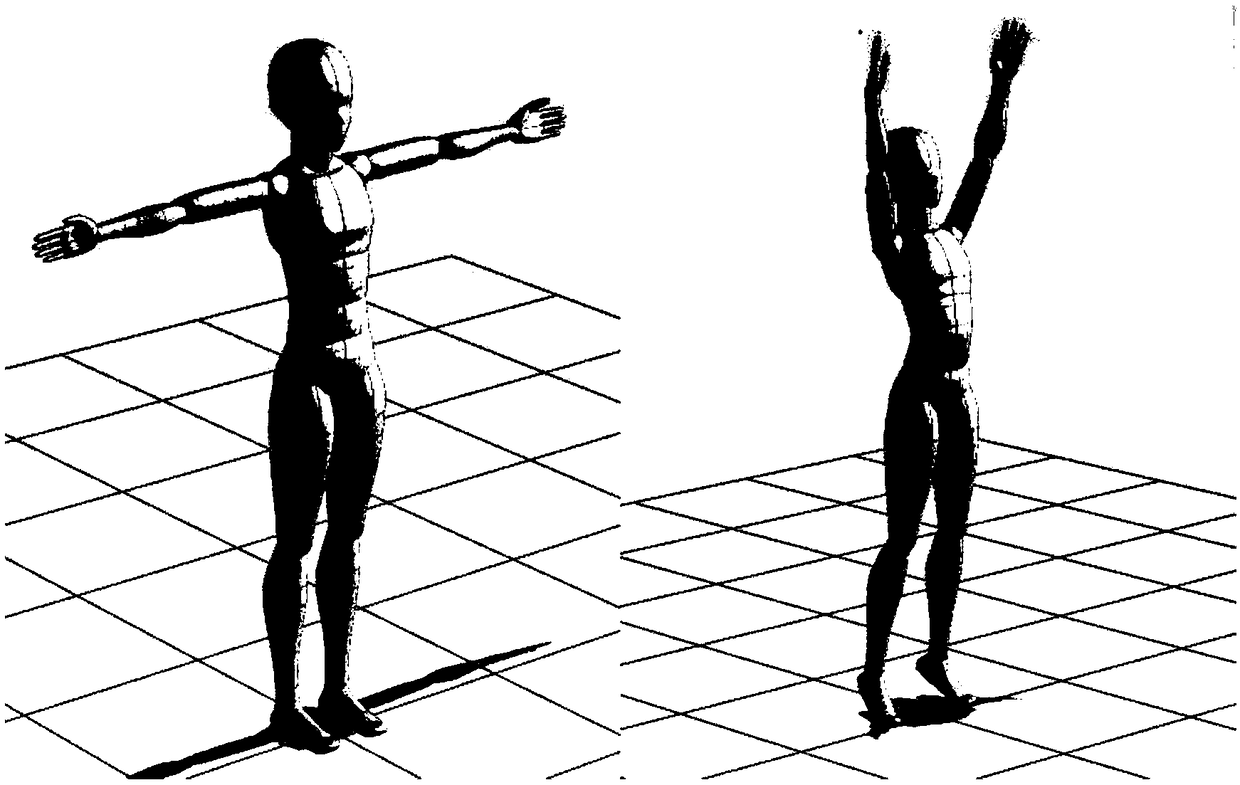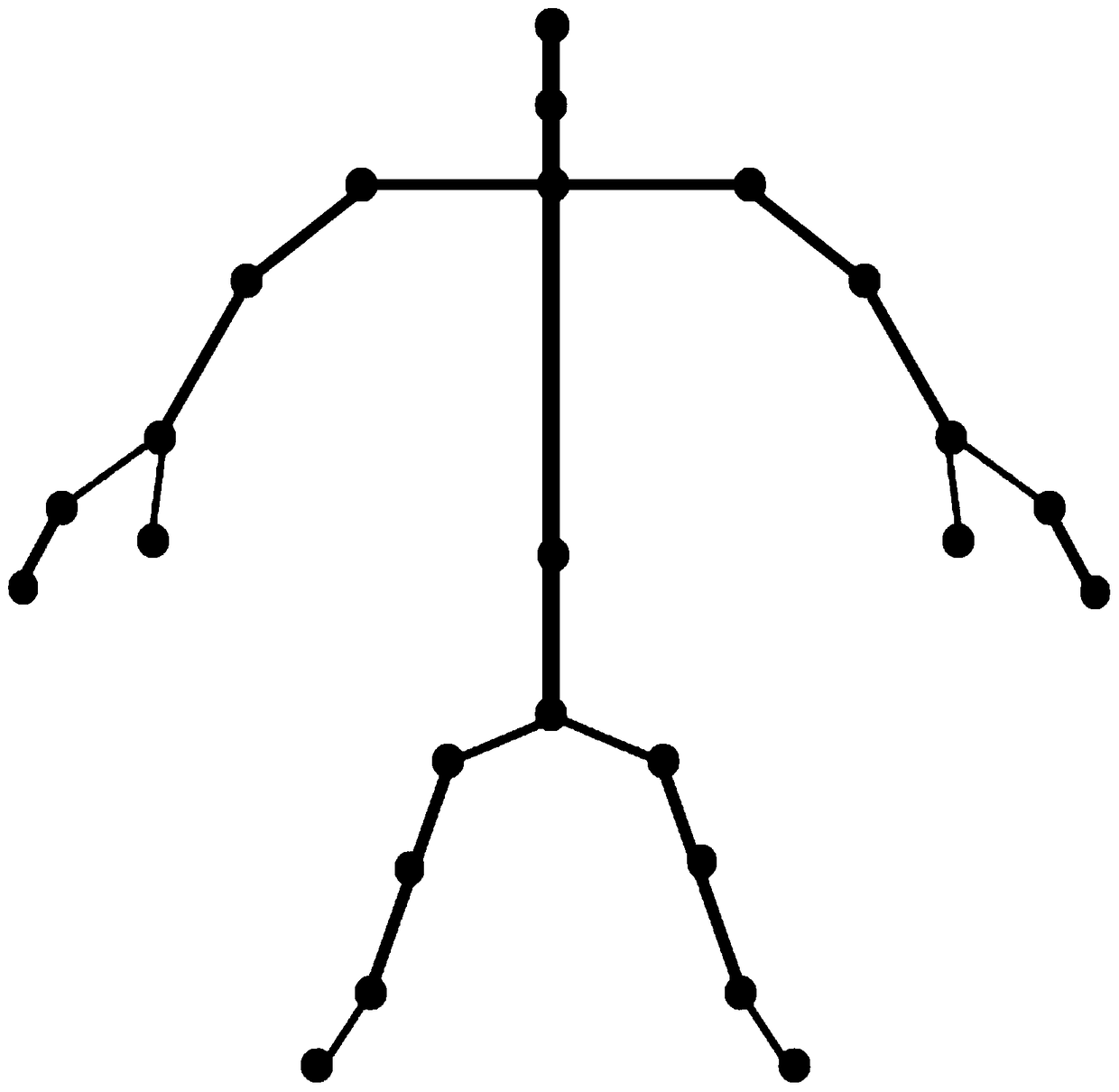Motion recognition method and device based on human body posture
An action recognition and human posture technology, applied in the field of human-computer interaction, can solve the problem of low recognition accuracy, and achieve the effects of improving recognition accuracy, solving low recognition accuracy and reducing complexity.
- Summary
- Abstract
- Description
- Claims
- Application Information
AI Technical Summary
Problems solved by technology
Method used
Image
Examples
Embodiment 1
[0061] This embodiment provides an action recognition method based on human posture, please refer to figure 1 , The method includes:
[0062] First, perform step S1: Obtain the bone data of the human body through the bone tracking technology of the depth sensor. The bone data includes the three-dimensional coordinates of the joint points of the human body, and the three-dimensional coordinates are converted to the world coordinate system where the human body is located.
[0063] Specifically, the depth sensor may be an existing sensor, such as Microsoft's Kinect sensor, Apple's PrimeSense sensor, etc. The number of human joint points obtained corresponds to the technology of the depth sensor. In this embodiment, KinectV2 can be used, which is a human-computer interaction device developed by Microsoft. Skeleton tracking technology is the core technology of KinectV2. It can accurately calibrate the 25 key nodes of the human body, and can determine the position of these 25 points. For...
Embodiment 2
[0133] This embodiment provides an action recognition device based on human posture, please refer to Figure 4 , The device includes:
[0134] The bone data acquisition module 401 is used to acquire human bone data through the bone tracking technology of the depth sensor. The bone data includes the three-dimensional coordinates of the joint points of the human body, and converts the three-dimensional coordinates to the world coordinate system where the human body is located;
[0135] The bone data filtering module 402 is used to filter the bone data by using an improved limiting filter algorithm to obtain filtered bone data. The improved limiting filter algorithm specifically includes: firstly determining whether the degree of jitter of the bone data exceeds a threshold value. If the jitter level of the bone data this time does not exceed the threshold, the bone data in the filter buffer will be used to update the bone data. Otherwise, continue to determine whether the jitter level ...
Embodiment 3
[0162] Based on the same inventive concept, this application also provides a computer-readable storage medium 500, please refer to Figure 5 , A computer program 511 is stored thereon, and the method in the first embodiment is realized when the program is executed.
[0163] Since the computer-readable storage medium introduced in the third embodiment of the present invention is the computer-readable storage medium used for implementing the human body gesture-based action recognition method in the first embodiment of the present invention, it is based on the method introduced in the first embodiment of the present invention Those skilled in the art can understand the specific structure and deformation of the computer-readable storage medium, so it will not be repeated here. All computer-readable storage media used in the method of the first embodiment of the present invention belong to the scope of the present invention.
PUM
 Login to View More
Login to View More Abstract
Description
Claims
Application Information
 Login to View More
Login to View More - Generate Ideas
- Intellectual Property
- Life Sciences
- Materials
- Tech Scout
- Unparalleled Data Quality
- Higher Quality Content
- 60% Fewer Hallucinations
Browse by: Latest US Patents, China's latest patents, Technical Efficacy Thesaurus, Application Domain, Technology Topic, Popular Technical Reports.
© 2025 PatSnap. All rights reserved.Legal|Privacy policy|Modern Slavery Act Transparency Statement|Sitemap|About US| Contact US: help@patsnap.com



